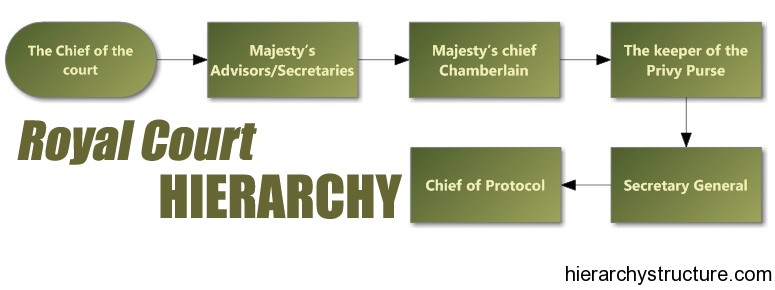The royal court hierarchy is an important political link between the king and the Central Government. The royal court also acts as an administrative link between the armed forces and security organizations. In addition, it is also a common interface between the king and the people.
With the progress of time, various smaller entities have assembled in the Royal court to support the work of other members of the Royal family. These entities are involved in various aspects such as social development, education, military and economic matters.
Relationship Between Monarch and the Government
The constitution plays an important role in describing the relationship between the kingdom and the government. The royal court supports that relationship for the effective execution of all the constitutional process and the procedures of the central government.
The Royal Court Hierarchy

The royal court functions in the following hierarchical structure:
- The Chief of the court: The Chief is the prime link between the king, the central government and the other authorities. The work of the chief is directly supervised by the king. The position of chief is the highest position in the hierarchy of the royal court.
- Majesty’s Advisors/Secretaries: The secretaries have specific duties, which are being assigned to them by the chief. They deal with various types of social, economic and educational affairs. They also deal in the military and tribal affairs. They always work in coordination with the legislative authorities.
- Majesty’s chief Chamberlain: They deal with all the private affairs of the royal family.
- The keeper of the Privy Purse: They deal with all the financial aspects of the royal family.
- Secretary General: The position and the job role of a secretary general is a vital one because s/he is the one who keeps an eye on all the departments of the court and ensures that all the offices are running smoothly without any hindrances.
- Chief of Protocol: The Chief of Protocol performs the day to day activities such as checking the daily schedule, the daily official visits, checking the smooth running of all the majesty’s program etc.
In addition to all the above sections of the royal court, there are also various other offices within the royal court that work in coordination with the chief of the royal court. The Chief of the court is the highest position and s/he takes care of all the important activities of the court.
Functions of the Royal Court
- The court acts as a political arena: All the political, economic and social dimensions of the kingdom are analyzed in the court. The kings share their powers with the common people and the families.
- The court acts as an administrative center: The court is the venue of various economic management processes and taxation procedures. The administrative section of the court is handled by officials and local tax collectors.
- The court acts as a symbolic center: The court organizes various festivals and games too.
- The court acts as a stage for monarchic representation: The different aspects of the function of court in this context are cultisation and charismatisation.
